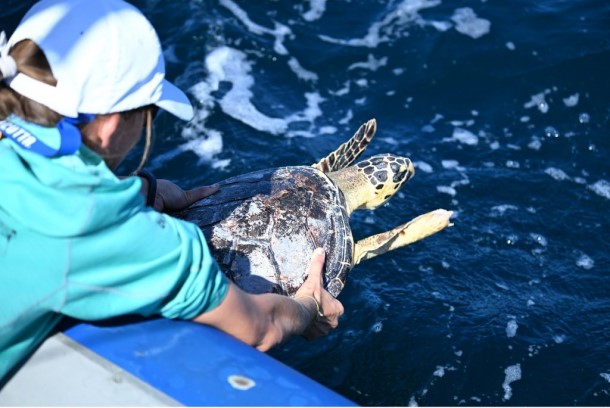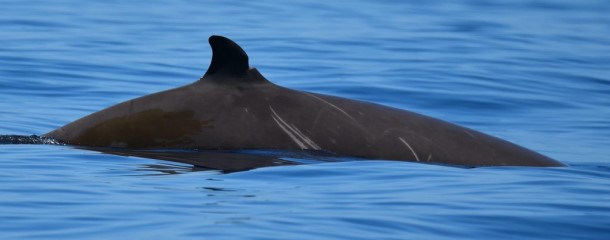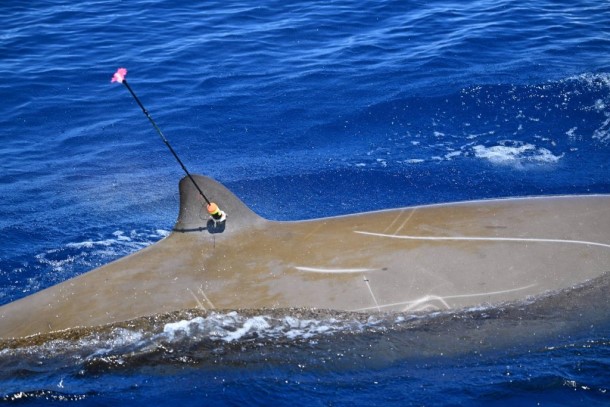First Satellite Tag Deployments for Atlantic BRS 2024
Posted on July 8, 2024
The team from Duke University has kicked off the field season for the 2024 Atlantic Behavioral Response Study (BRS)! On June 20th, the crew of five drove up to Manteo, NC with the R/V Barber, a 30’ research vessel, in tow. By first light the following day, they were headed out to sea with a special guest aboard: Bagheera, a young hawksbill sea turtle. Bagheera was found cold stunned in Pamlico Sound last winter, and the kind folks at the NC Aquarium on Roanoke Island rehabilitated and cleared her for release. Bagheera was awaiting a ride to Florida for her release back into warm waters, but because we head all the way to the Gulf Stream for our research, serendipity allowed us to return this lucky turtle to the Atlantic Ocean.
 Ally Kristan releasing Bagheera. Photo by Annie Harshbarger.
Ally Kristan releasing Bagheera. Photo by Annie Harshbarger.
With Bagheera free, we began searching for our focal species: the goose-beaked whale (Ziphius cavirostris). Goose-beaked whales are found in deep waters, just beyond the continental shelf; to find them, we head 40 miles offshore and search at the surface, 1,500+ meters above their foraging areas near the sea floor.
 Distinctive goose-beaked whale. Photo by Annie Harshbarger.
Distinctive goose-beaked whale. Photo by Annie Harshbarger.
We photograph each whale so that we can follow them year after year. We look forward to re-sighting whales we’ve studied before, and we have already recognized a couple of familiar whales this season. And, when possible, we attach satellite-linked dive recorders to the dorsal fins of some whales. The tags collect information on the whales’ diving behavior and location, and the data is transmitted via satellite to us back on shore. This information adds to our record of baseline behavior of a particularly elusive species. Additionally, we can re-locate beaked tagged whales groups ahead of our planned Controlled Exposure Experiment (CEE) with a Navy vessel later this summer.
The seas were a little rough for tag deployments on our first day offshore, but on the second day we experienced calmer seas and successfully deployed two satellite tags. We were also excited to see a mom and calf pair of goose-beaked whales. In addition to the Ziphius, we encountered a group of pelagic bottlenose dolphins, several pods of pilot whales, many shearwaters, and even a manta ray! The Atlantic Ocean is a beautiful office, and we’re honored to study the extraordinary wildlife who call it home.
 Satellite-linked dive recorder being attached to the dorsal fin of a goose-beaked whale. The arrow is shed, leaving the tag attached to the fin. Photo by Dr. Will Cioffi.
Satellite-linked dive recorder being attached to the dorsal fin of a goose-beaked whale. The arrow is shed, leaving the tag attached to the fin. Photo by Dr. Will Cioffi.

